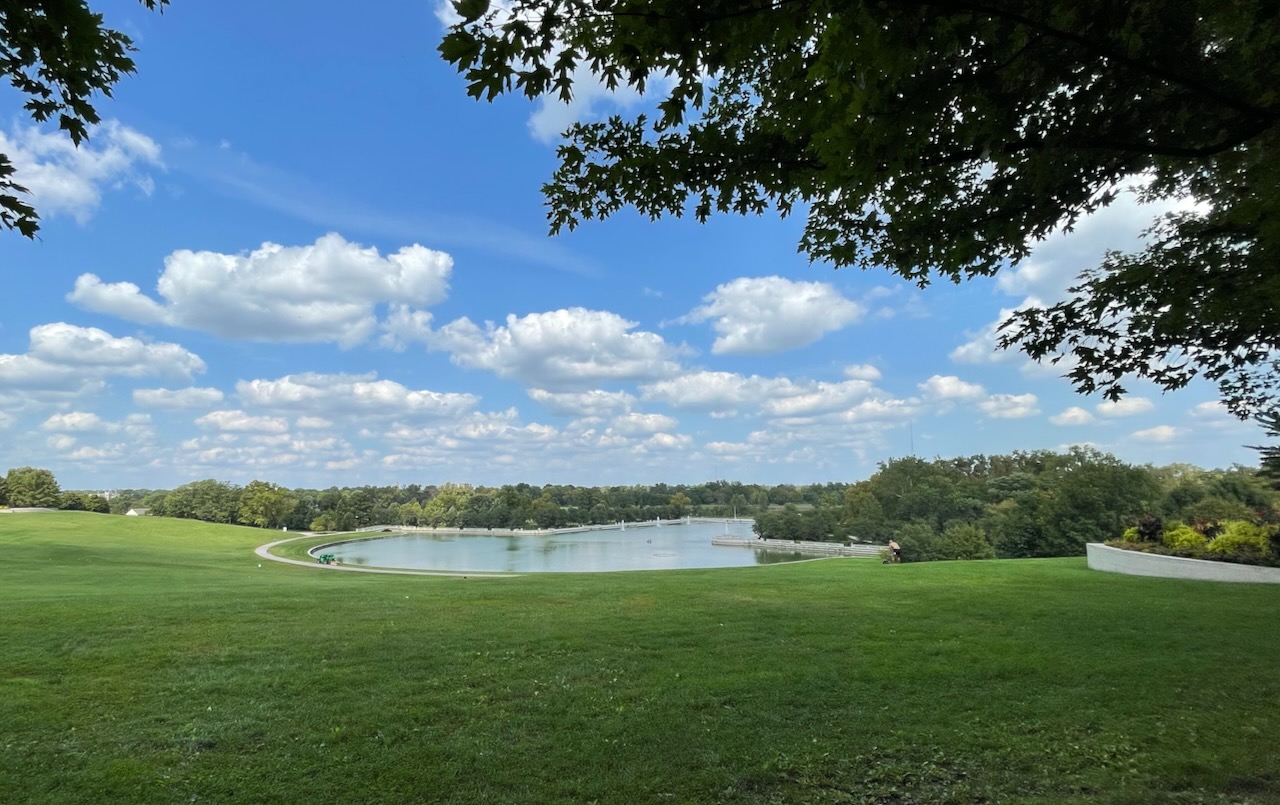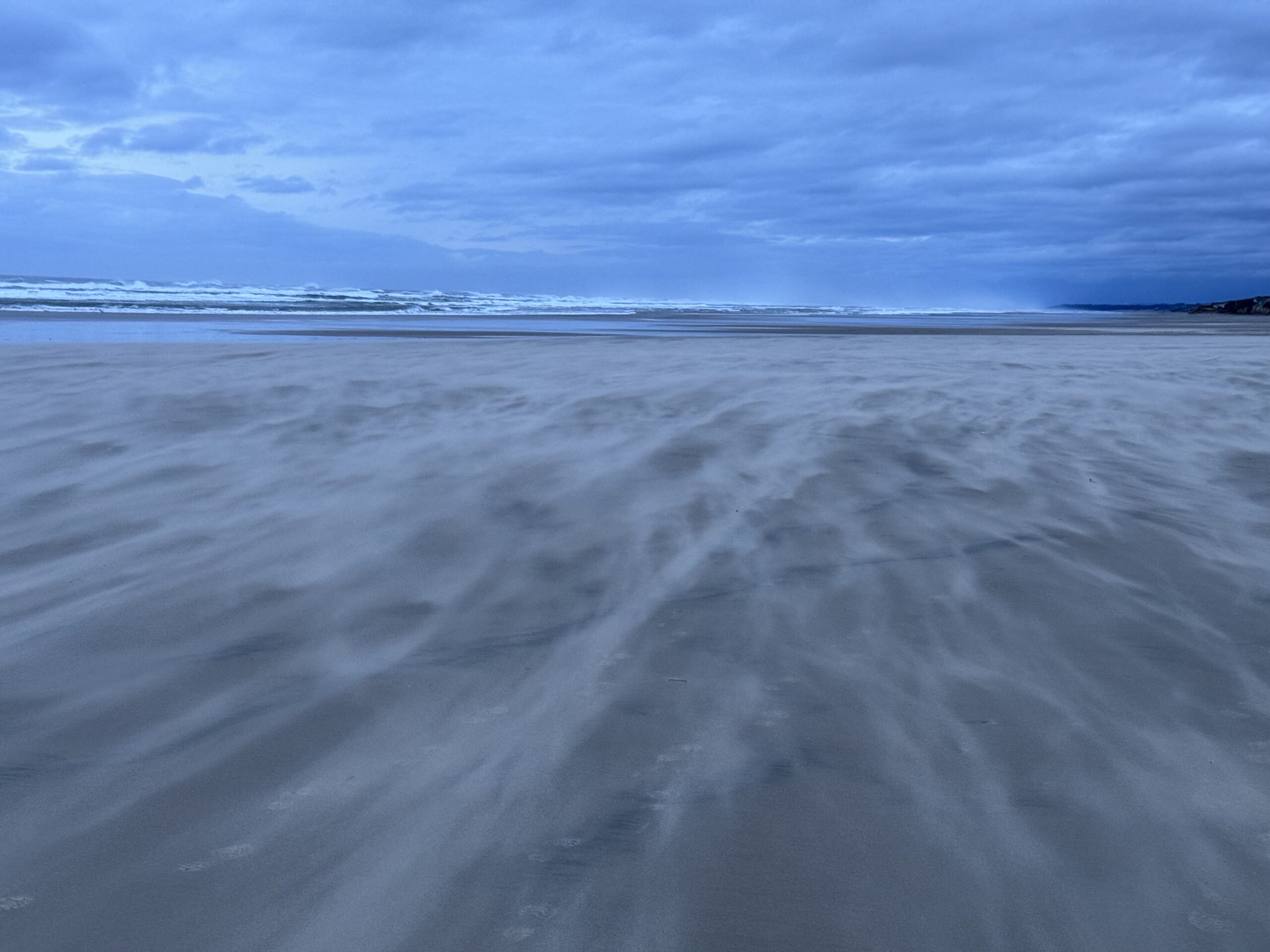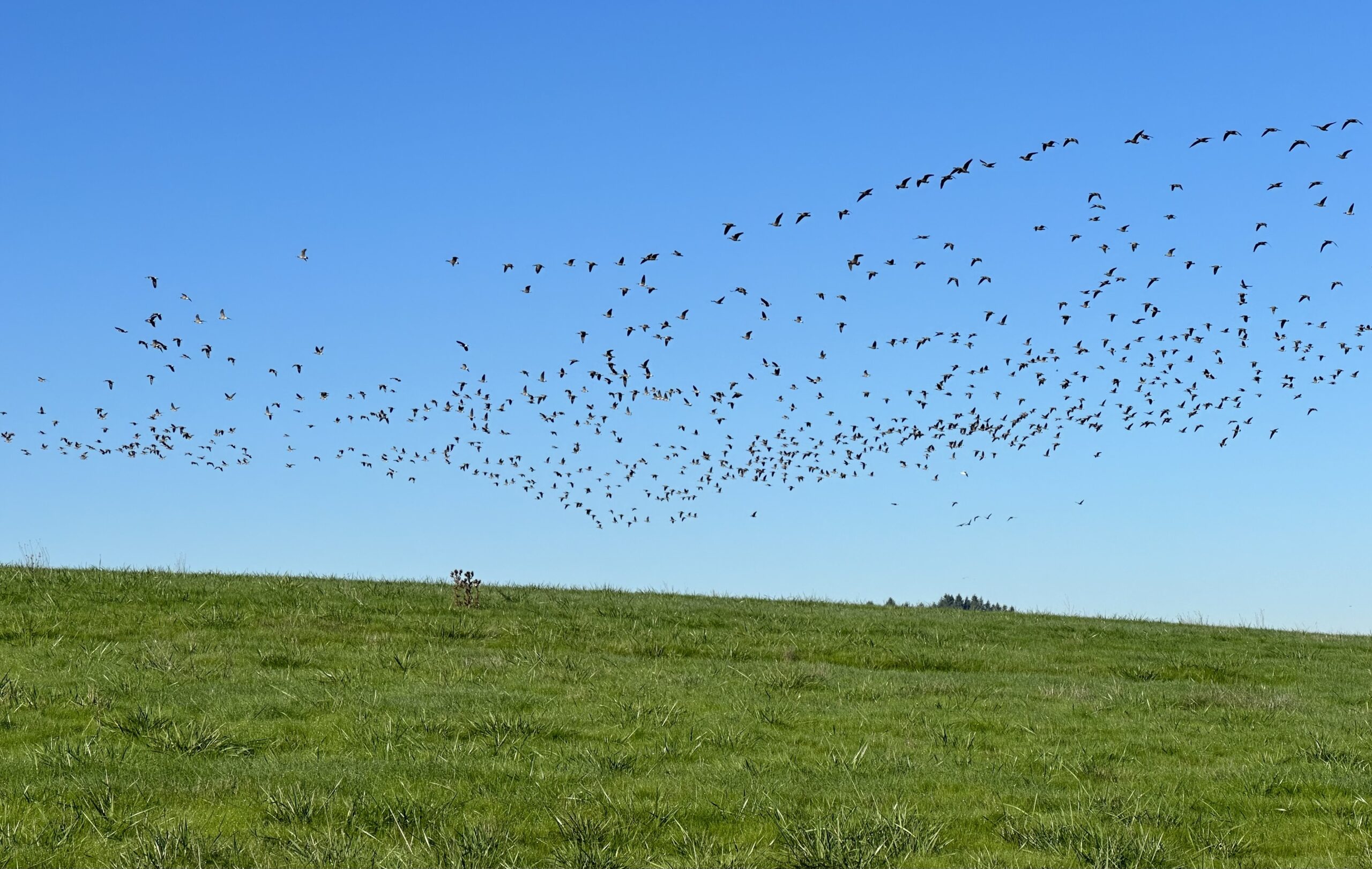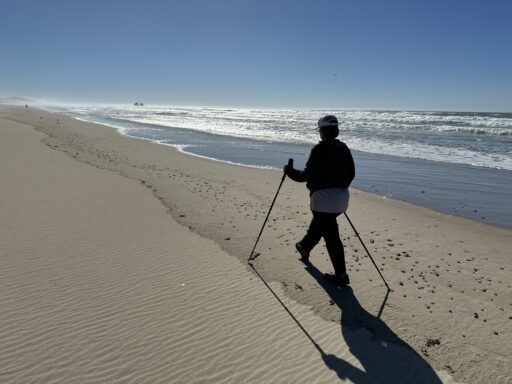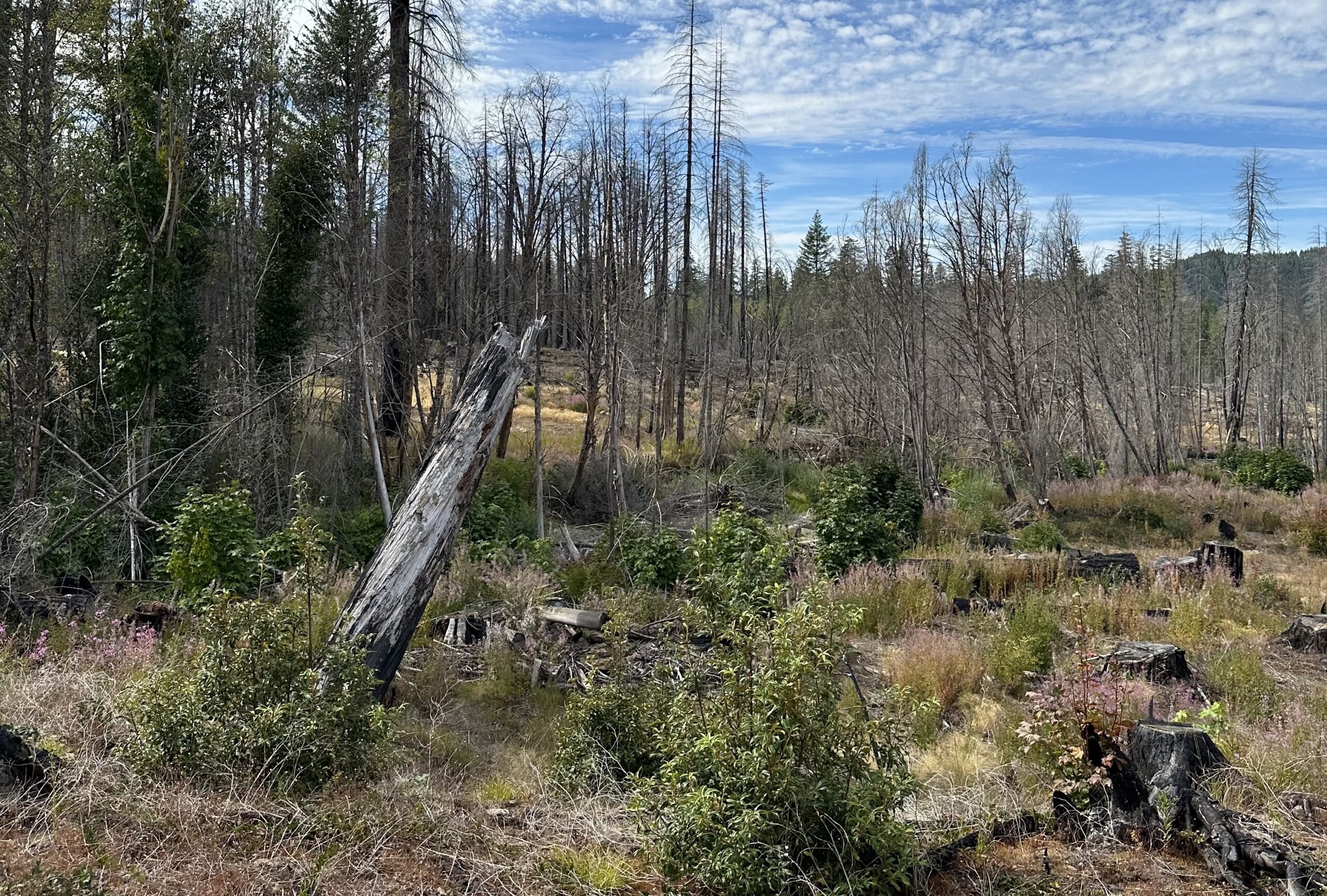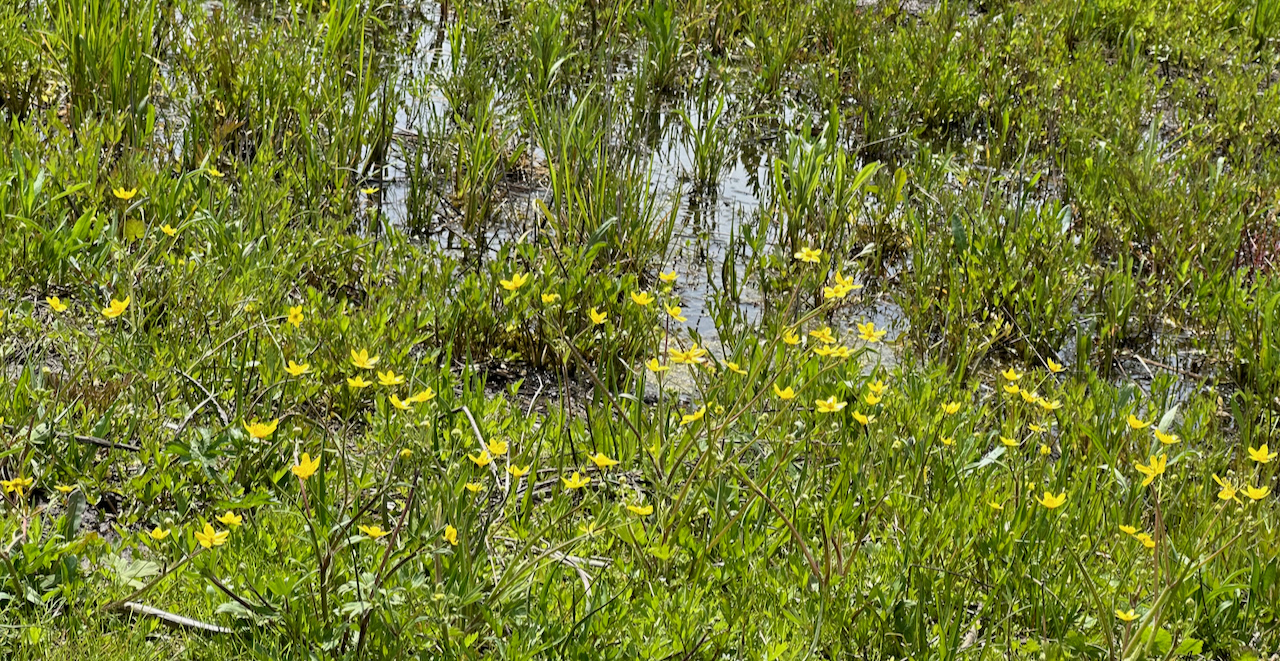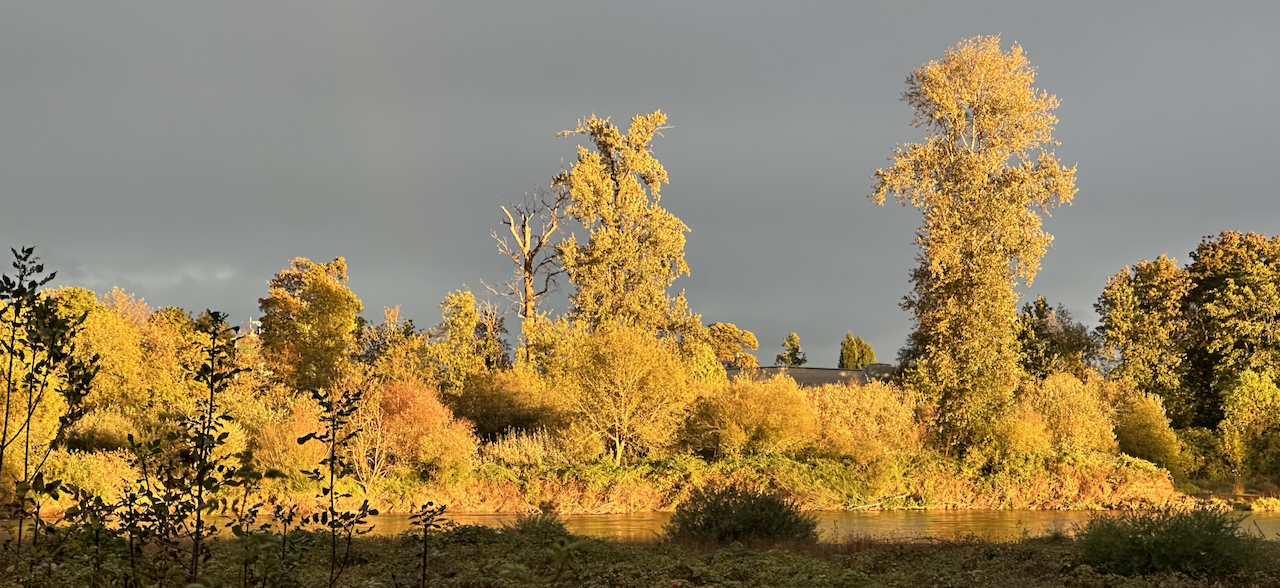Three years ago, at the end of the ill-fated summer of 2020, George and I went to our off-grid mountain cabin as we had for so many years. Our cabin was in a little enclave of summer homes perched along a snow-fed river within an Oregon old growth and second growth forest. It was situated a couple of hours from our home in the Willamette Valley.
When we heard about wildfire to the east, we were more concerned about the effects of smoke combined with Covid than we were with fire’s spread. Our Anniversary only a day away, we thought we’d stay one more night, After all, we’d weathered storms there before. Then the local rural fire department stopped by to upgrade our evacuation status to Go. We agreed that this was a most excellent idea.
As soon as we finished staining the decks.
With the dozen or so other cabin owners gone, the forest had gone strangely silent.
While we were closing up, I looked around for Calvin, our little white designer mutt. I called his name. No response. We searched the woods. Nothing. A few panicked minutes later, I found the little guy quaking and refusing to get out from under our car. I crouched on all fours to pull him into my arms.
That’s when time stopped. I saw myself in an eerie tableau, surrounded by the vertical green uprising of a heavily wooded two-hundred-year-old forest of at least 13 varieties of ancient trees and countless species of animal life, and yet no chipmunks or jays squawked into the vacuum.
At that moment it still didn’t occur to me that any part of what was present all around us could ever be lost. The silence was that deep and that wide, an enormous space filled with a world of peace. I sat quietly, savoring the enormity of the feeling.
Meanwhile, the staining done, we snapped into autopilot, locked up and left, leaving the guestbook of cabin history we always left on the kitchen table for posterity.
A toxic yellow cloud tailgated us for the entire the 85-mile trip back to our hometown. It arrived at our doorstep along with us, having traveled roughly 70 miles an hour. This was the same cloud that broke records for air pollution and later settled around the entire globe.
That day, of course, we didn’t know any of this. All we knew was that the radios on the ground were gone and only a couple of firefighters were fending off destruction of a historic lodge and retreat center. The next couple of days we were part of an informal network, trying to guess from Forest Service maps which of our cabins had gone up in smoke. We guessed and said goodbye to one summer home after another via chats. Months later we finally learned that 69 burned. The mystery of the one that remained has yet to be solved.
It’s been three years since what has come to be called the Labor Day Conflagration of 2020, which drove those faraway fires to burn that entire valley and so many more throughout the West.
I refused to return to the site of destruction when my husband and others made trips there. I simply wasn’t ready. This allowed me to create an untouchable cabin tableau in which every corner of my mind is filled with sentimental objects from a century of family life. This included family quilts, even the one we once huddled under after we first made love in his college apartment. In the corner was an irreplaceable handmade cajon my husband bought on the street in Havana from a Cuban drummer, and the walls were covered with maps of the area and original art created by friends. All alive now, preserved only my memory. Beautiful and inviolate forever.
Last weekend I finally returned to the burn. When we arrived at the knoll that once held our summer home, the sky was open and the nearby mountaintops were suddenly visible, a new backdrop to the mass graves of piled logs. Instead of being flattened by a sense of emptiness and loss as I had expected, I stepped into a familiar and soothing refrain: the buzzing and bumbling of dragonflies and horseflies, competing with jays and crows for airtime. Purple fireweed heathered all the clearings, their cheerfulness broken by black horizontal stripes of fallen wooden soldiers.
I looked up to see the shell of a tall tree that had once been the best view from our outhouse, as it stood tall pointing to the stars and moon. It was still vertical. Remembering how I once piled stones there, I reached down to find a sleek river rock, once black and now a mottled red. It was hot. I stood quietly, in awe of the power of fire, whether from the sun or wildfire. Ghosts of old growth cedar and yew and spruce and fir stood in silent sentry around us, witnesses of an older order. There was some solace in the sheer force of destruction.
in the middle of the scene was a giant redwood snag I had called the Grandmother. She had been my mentor, my elder, my friend and meditation teacher for 17 years.I even introduced her to my real-life mother. Each time I had arrived at the cabin and each time I left, I had greeted her, honored her enormous life cycle, noticed how she was leaning but still unbowed, sheltering frilly ferns and thick moss at her base. And here now just beyond the clearing she leaned, her bark whitened above the flame mark, and yet her roots still held firm, deeply connected in the earth.
The deep well of destruction. The buzzing sounds of creation. All of this held in the enormity of a moment of Silence.
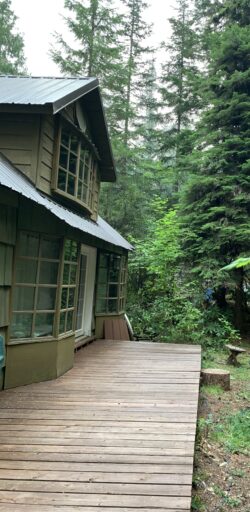
Fireweed Dance
Yesterday I hobnobbed with ghosts,
danced on the grave of the ancient forest,
trucked with shadows from the trees.
I did the fireweed dance
The mullein dance, the dragonfly dance
On that place where something else once stood.
And then
for a still moment there was and there wasn’t
an absence of anything,
even that cabin with the shaky floors
and the stained-glass skylights
once dwarfed by forest giants
now eloped, fused together forever
carried away
by the mountain wind
— SgB 2023
